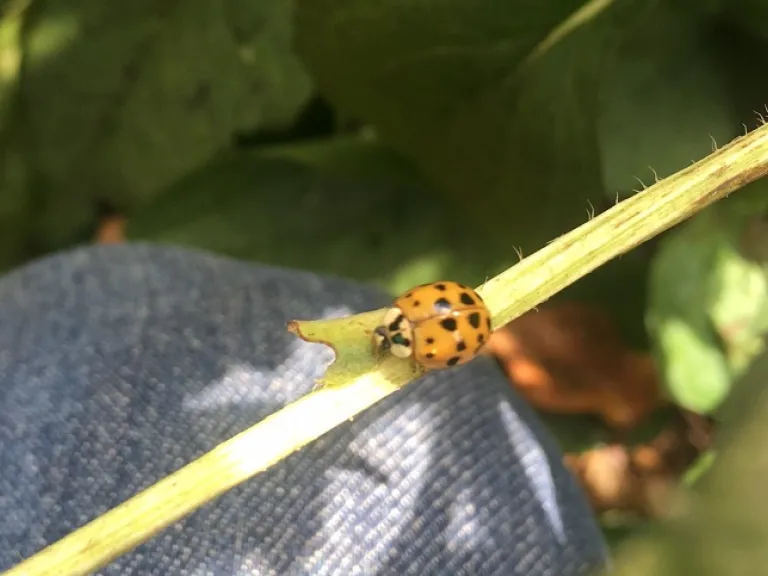
Let ‘Em Work, Let ‘Em Live

What comes to mind when you think of a “good” insect? For me, before I started studying horticulture, it was the ones that I didn’t think should meet the end of a rolled up newspaper. Those select few included butterflies, dragonflies, bumblebees, and ladybugs. Things have changed since then and I have grown to accept, value, and not run screaming from a whole slew of insects. But, hands down, one of my favorites is still the ladybug.
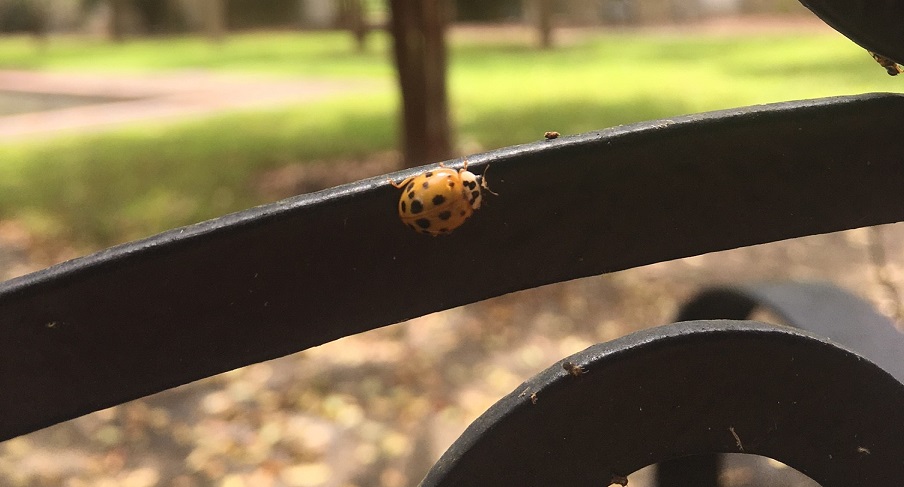
When you think of a ladybug, or lady beetle, your mind likely conjures an image like the one above. A red, shiny shelled, round delight, cheerfully decorated with black polka dots. What’s scary about that? This is an image most of us have come to gleefully welcome. However, before ladybugs became cute, they went through a couple of borderline creepy stages.
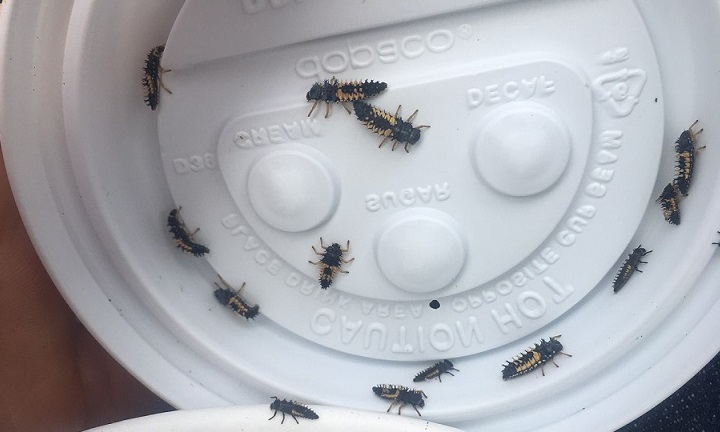
Believe it or not, what you see above is also a ladybug! I know, I know, it’s not that flashy red, and it’s not all that appealing either. This is the immature, or larval stage, of a ladybug.
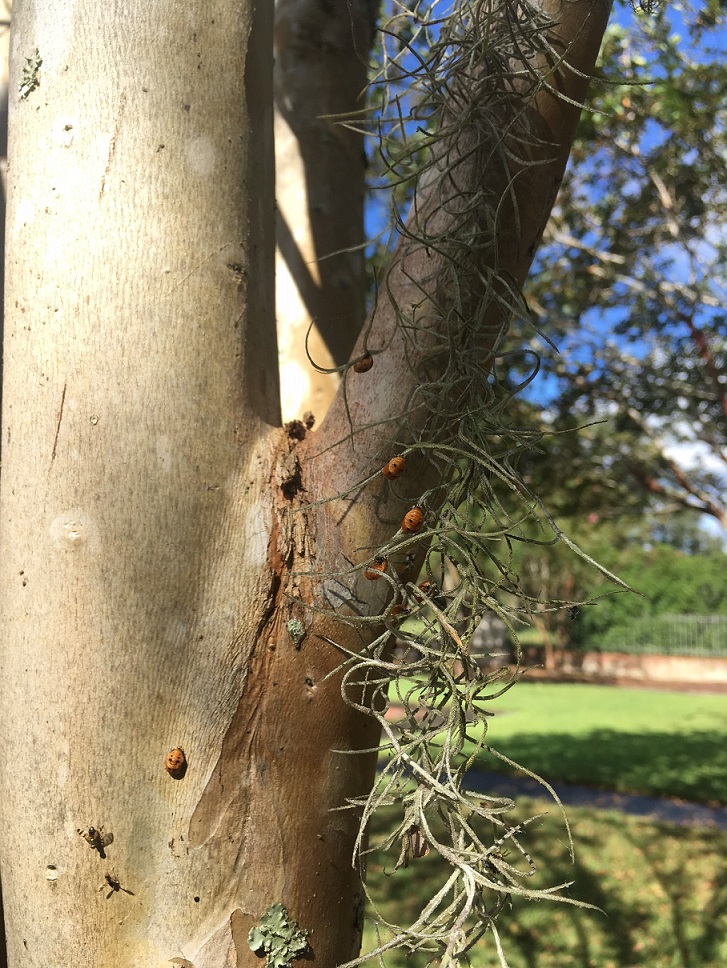
We’re starting to get closer…! This is the pupa of a ladybug. Like butterflies, ladybugs have to go through a metamorphosis in order to complete their life cycles from immature larvae to adults. The pupae can be found on leaves, or in this case, on Spanish Moss and the side of trees.
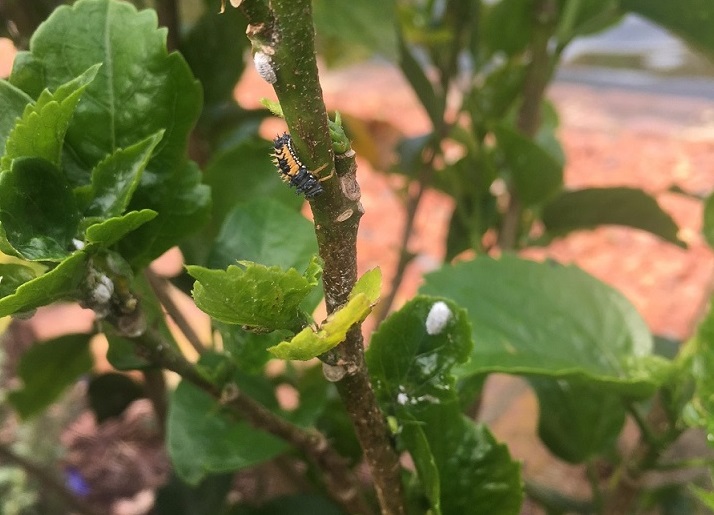
Enough about looks, let’s talk about what makes ladybugs so great. It’s simple: they are beneficial insects. This means they are one of the garden “good guys” who help to keep problem insects in check, like aphids and mealybugs. Remember that larval stage of the ladybug we looked at? They are voracious hunters of the problem insects we mentioned. You want these guys (and girls!) in the garden, despite their somewhat alarming appearances.
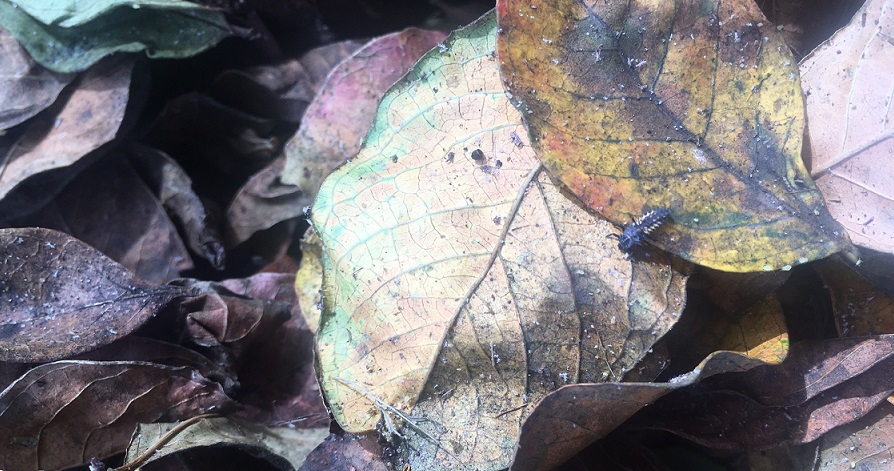
Our gardens at Brookgreen are just like your garden at home; we have to contend with problem insects too. In one case, what started as a problem in the Poetry Garden led to a ladybug dispersal in a couple of other gardens in need. The Crape Myrtles in the Poetry Garden have become a home to aphids, also known as plant lice, a common garden pest that use their piercing-sucking mouthparts to suck the juice out of plants. This did not go unnoticed by what has become an army of ladybugs. The aphids just rang the dinner bell.
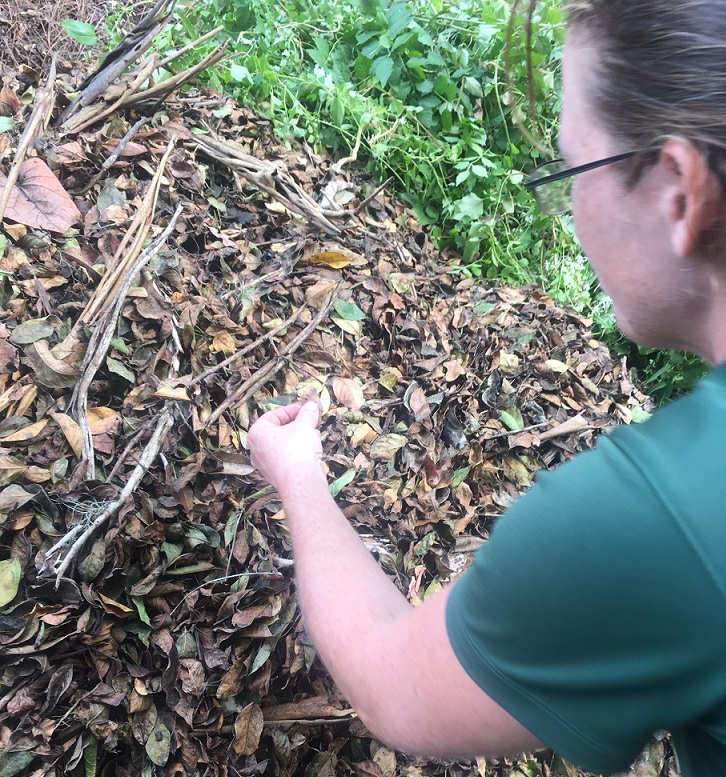
In an effort to try to control the aphid population and to stop it from spreading to the plants below, fallen Crape Myrtle leaves were piled, collected, and moved off site. During this time, the ladybug larvae started to crawl to the top of the pile of leaves. Gina, a fellow Horticulturist, and I began collecting the larvae to move them to other sites in need of a little ladybug intervention.
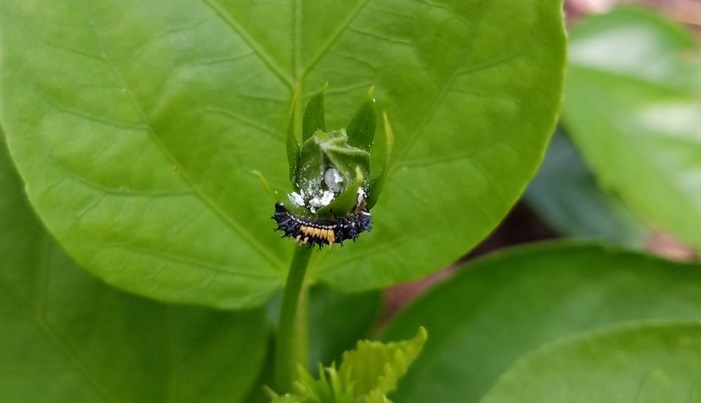
Gina had been experiencing some problems with mealybugs, another common garden pest that feed similarly to aphids, on some of her plants. We relocated our ladybugs and let them loose. Some of the larvae were taking some time to adjust to their new surroundings, while others, like the one above, got straight to work.
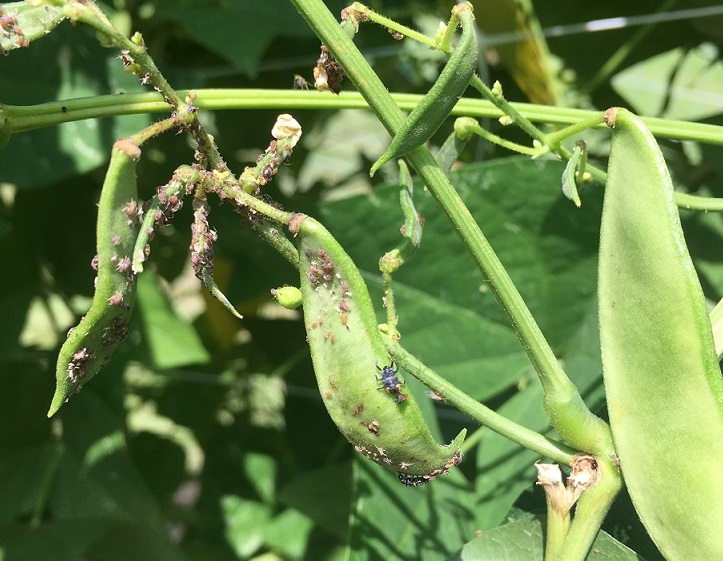
Amber, our Horticulturist overseeing Bethea’s Garden, also had some garden pests. Aphids had started to take interest in her pole beans. Another collection of ladybug larvae from our leaf pile made for a second release. The ladybugs stayed around for a couple of days, just long enough to eat the problem aphids away. A job well done!
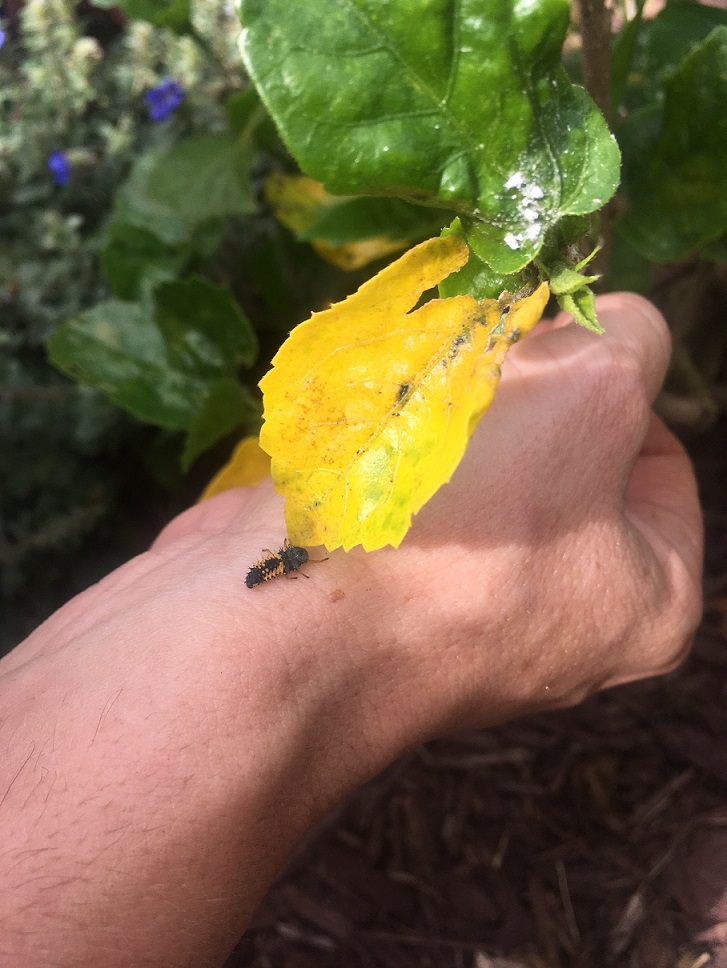
While releasing ladybugs is an exciting way to tackle pests without the use of chemicals, it is by no means a guarantee of success. As the old saying goes: You can lead a horse to water, but you can’t make it drink. If the ladybugs do not want to be there, generally because there is no food or other resources, they will leave. We have been fortunate to have our ladybugs stick around and help us handle our pest problems in the best way possible: Naturally. The next time you see an insect, don’t be scared, it may just be one of the garden good guys.
See you in the gardens!
Hours
Hours: 9:30 AM - 5:00 PM | Daily
Extended Dining Hours (members only): Wednesdays & Saturdays | 5:00PM - 8:00PM | Gardens and exhibits will be closed, Harvest Restaurant will be open for members with reservations only
Gates close at 4:30 PM. For their safety and the safety of our animal collection, pets are not allowed, nor can they be left in vehicles inside Brookgreen. Service animals that have received special training to assist disabled persons are welcome.
Tickets
Daily General Admission Tickets for 7 consecutive days
Children 3 and under: Free
Children 4-12: $12
Adults 13-64: $22
Seniors 65 & Over: $20
Location
1931 Brookgreen Drive
Murrells Inlet, SC 29576
Off US Highway 17 Bypass, between Murrells Inlet and Pawleys Island on South Carolina's Hammock Coast
843-235-6000
GOOGLE DIRECTIONS